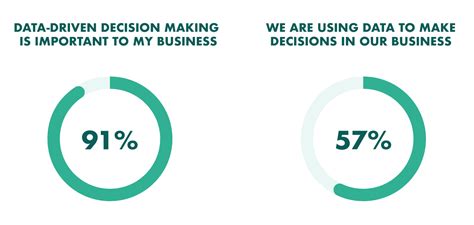Data-Driven Decisions: The Maa & Penguin Stats Way
In today's dynamic business landscape, making informed decisions is paramount to success. Relying solely on intuition or gut feeling is a risky strategy. Instead, embracing a data-driven approach, leveraging robust analytics and insightful interpretation, is the key to unlocking growth and maximizing efficiency. This article explores how the principles behind "Maa" (a hypothetical, robust analytics platform, representing the best practices of data analysis) and the impactful lessons from Google's Penguin algorithm update can guide businesses towards making superior, data-informed decisions. We will explore concrete examples and strategies to transform your decision-making process.
What is the "Maa" Approach to Data Analysis?
The "Maa" approach (short for "Maximum Analytical Accuracy") represents a best-practice framework for data analysis, emphasizing several key principles:
- Data Quality First: The foundation of any successful data-driven strategy is high-quality data. "Maa" prioritizes data cleansing, validation, and ensuring accuracy before any analysis begins. Inaccurate data leads to flawed conclusions and ultimately, poor decisions.
- Holistic Data Integration: "Maa" advocates for integrating data from multiple sources to get a complete picture. This could include internal data (sales figures, customer interactions), external data (market trends, competitor analysis), and even unstructured data (social media sentiment).
- Advanced Analytical Techniques: Moving beyond simple descriptive statistics, "Maa" leverages more sophisticated analytical methods like regression analysis, machine learning, and predictive modeling to uncover deeper insights and patterns.
- Visualizations for Clarity: Data visualization is crucial for effective communication. "Maa" emphasizes creating clear, concise, and impactful visualizations – dashboards, charts, and graphs – to convey complex data insights to stakeholders.
- Actionable Insights: The ultimate goal of data analysis is to inform action. "Maa" focuses on extracting actionable insights that can directly improve business processes, strategies, and outcomes.
Lessons from Google's Penguin Algorithm Update
Google's Penguin algorithm update, while targeting manipulative SEO practices, offers valuable lessons for data-driven decision-making:
- Transparency and Authenticity: Penguin penalized websites employing black-hat SEO tactics, emphasizing the importance of transparency and authenticity in all online activities. This translates to data analysis by encouraging honesty in data collection and interpretation. Avoid manipulating data to support pre-conceived notions.
- Focus on User Experience: Penguin's core aim was to improve user experience by penalizing websites that prioritized search engine ranking over providing value to users. This highlights the importance of aligning data-driven decisions with the overall user experience. Don't just focus on metrics; consider the human impact.
- Long-Term Strategy: Penguin's lasting effect underscores the importance of a long-term strategy. Quick fixes and short-sighted decisions based on limited data can have negative long-term consequences. A sustainable data-driven strategy prioritizes long-term growth and sustainability.
How to Integrate "Maa" & Penguin Principles
Here's how to combine the "Maa" approach with the lessons from Penguin to make data-driven decisions:
-
Establish Clear Goals: Define specific, measurable, achievable, relevant, and time-bound (SMART) goals before diving into data analysis. This ensures your analysis focuses on addressing critical business needs.
-
Collect and Clean Your Data: Invest in robust data collection systems and implement rigorous data cleaning procedures to ensure data accuracy.
-
Choose the Right Analytical Methods: Select the appropriate analytical methods based on your goals and data type. Don't try to force a complex analysis when simpler methods suffice.
-
Visualize and Communicate: Create clear and concise visualizations to effectively communicate your findings to stakeholders.
-
Act on Your Insights: Translate your data insights into actionable strategies and implement them diligently. Track the results and iterate based on the data you collect.
-
Monitor and Adapt: Continuously monitor the performance of your decisions and adapt your strategies as needed. The business environment is constantly changing, and your data-driven approach should evolve with it.
Frequently Asked Questions
What type of data should I prioritize?
Prioritize data directly relevant to your business goals. This might include sales data, customer demographics, website traffic, social media engagement, and market trends. Focus on data that provides actionable insights.
How can I ensure data accuracy?
Implement robust data validation and cleaning procedures. Use multiple data sources to cross-reference information and identify inconsistencies. Regularly review and update your data sources to ensure accuracy.
What if my data analysis reveals unexpected results?
Unexpected results can be valuable learning opportunities. Analyze the reasons behind the unexpected findings and adjust your strategies accordingly. Don't be afraid to question your initial assumptions.
How often should I conduct data analysis?
The frequency of data analysis depends on your business needs and the nature of your data. Some businesses may conduct daily analysis, while others may perform it monthly or quarterly. Establish a regular schedule that aligns with your goals and resources.
By integrating the "Maa" approach and learning from the lessons of Google's Penguin algorithm, businesses can build a robust data-driven culture that fosters informed decision-making, improves operational efficiency, and drives sustainable growth. Remember: data is not just information; it's the fuel for informed, strategic action.

